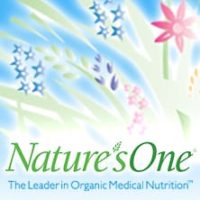Nature’s One

| Rating |     |
| Farm/Brand Headquarters | Lewis Center, OH |
| Products | Formula |
| Website | www.naturesone.com |
| Market Area | Nationwide |
| Total Score | 1420 |
They write: “Nature’s One is the leader in organic pediatric nutrition, offering a better start for every child. Founded in 1997, Nature’s One is independently owned and the leading organic formula company still today. From the beginning, Nature’s One has invested millions in the development of ingredients and science that embraces the meaning of organic while insuring the purity that parents demand for their child.
Nature’s One introduced the first organic formula in the USA and now sells into many countries where consumers demand the very best for their family. Brands found worldwide include Baby’s Only Organic, PediaSmart and PediaVance.
Celebrating 20 plus years of innovation, Nature’s One continues to innovate pure organic products that meet its stringent Pure10 Pledge. A pledge that serves as an industry hallmark and is respected by parents everywhere.”
| Criteria | Points | Comment |
|---|---|---|
| TOTAL (possible score is 1600 plus extra credit) | 1420 | 4-Cow Rating | Excellent     |
|
Farmstead dairies earn the most points. Corporations that have a history of skirting the organic rules receive the fewest. Ownership structure | 60 | Corporation with a good track record |
|
Farms that produce 100% of their milk receive the most points. Milk from "open market" or known confinement dairies receive the fewest. Milk Supply | 90 | Milk of integrity from trusted cooperative |
|
100% organic farms receive the most points. Split operations with conventional dairy on the same property receive the fewest. Organic Production | 100 | Brand only markets organic dairy products |
|
Farms that completed the survey in detail received the most points.
Disclosure of Information for Verification | 100 | Full disclosure |
|
Points determined by integrity of the brand’s organic certifier. Organic Certification | 100 | OneCert |
|
Animal Welfare Approved and Biodynamic certifications receive the most bonus points. Producers are not penalized for not having additional certifications beyond organic. Other Labels/Standards | 0 | None |
|
100% grass-fed with independent verification of standards Grass-fed | 50 | Exceeds minimum USDA standards for grazing |
|
No points are given for this but the information may be useful to certain consumers looking to avoid soy. Soy Free Ration? | No | |
|
Sliding scale based on policies, enforcement, acreage/cow, days/year on pasture, and permissible exemption. Pasture | 70 | Supplier farms do adequate grazing in a difficult climate. |
|
One time/day receives the most points. Two times per day is standard. Times Milked | 90 | Two times a day (standard protocol on legitimate organic dairies) |
|
Lower cull rate scores better, with under 10% receiving the most points. Cull/death Rate | 75 | Moderate cull/death rate. Will vary widely between farms. |
|
Farms with closed herds receive the most points. Farms that sell organic calves and buy conventional replacements receive the fewest. Replacements | 100 | Closed herds |
|
Standard practice is removing calves shortly after birth, with extra points given for unique ways of managing calves
Calves | 75 | Removed shortly after birth (standard practice) |
|
Farms that prohibit antibiotics receive the most points. Farms that allow young stock to receive antibiotics (under one year), receive the fewest.
Antibiotic Use | 100 | No antibiotics |
|
No hormones is the standard, however some farms do use oxytocin for therapeutic purposes. Hormone Usage | 100 | No hormones |
|
Farmstead dairies (owner lives on-site) receive the most points. Fewer points are given as oversight declines. Farm Support | 75 | Depends on third-party for supervision; that third party visits farms regularly |
|
All ingredients sourced from inside the organization or on the farm receives the highest points. Ingredients from confinement factory farms and/or imported ingredients receive the fewest. Procurement of Ingredients | 85 | Procurement of ingredients from good sources |
|
Various levels of extra credit given for 1) providing full organic systems plan, 2) providing details on all farms (multi-farm brands, details on largest five required), and 3) sourcing feed on-farm or domestically. Extra Credit | 150 | Top transparency! Provided information about where they source their grain (from the open market). |

